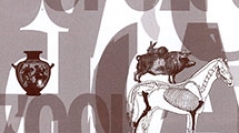

 Anthropozoologica
49 (1) - Pages 121-132
Anthropozoologica
49 (1) - Pages 121-132The Sheffield cutlery industry is at least 700 years old. Historical descriptions of the trade have generally concentrated on the craft organisation by the Company of Cutlers in Hallamshire and the manufacture of steel for the blades. Examples of knives and razors from the 17th century onwards survive in museums and private collections and are often displayed as examples of artistic craftsmanship, usually because of the material and design of the handles. Such items are attractive and form pleasing displays, but the trade in the handle materials and the methods of manufacture have often been ignored. Cutlery handles may be manufactured from costly and exotic materials such as ivory and tortoiseshell, or from bone or antler on more mundane and lower quality knives. Bone, horn and stag antler could of course be locally sourced – cattle bone and horn, and sheep and pig bone from slaughter houses while the trade’s use of so-called ‘stag’ (antlers from any species of deer) could come from native herds and abroad. Other materials, such as ivories, tortoiseshell, horn from buffalo and ‘stag’ from exotic deer species, had to be imported from around the world. Not only could these materials be made into attractive handles, but some also lent themselves to carving and inlays, adding further to their desirability. This paper will highlight the documentary sources available for the Sheffield trade, which indicate the use of animal-derived materials for the cutlery industry, and will combine archaeological evidence to consider some of the methods of manufacture.
Sheffield cutlery industry, bone, ivory, horn, knife handles